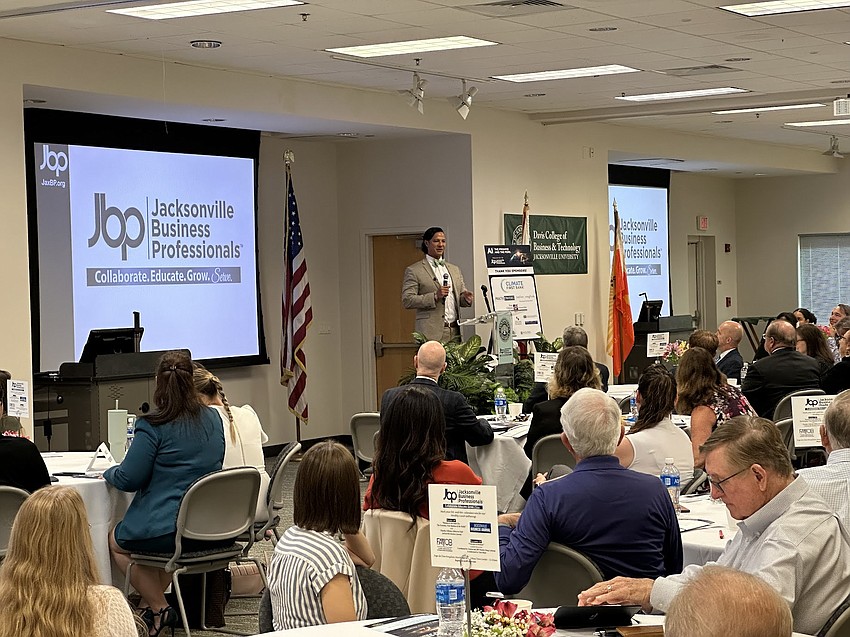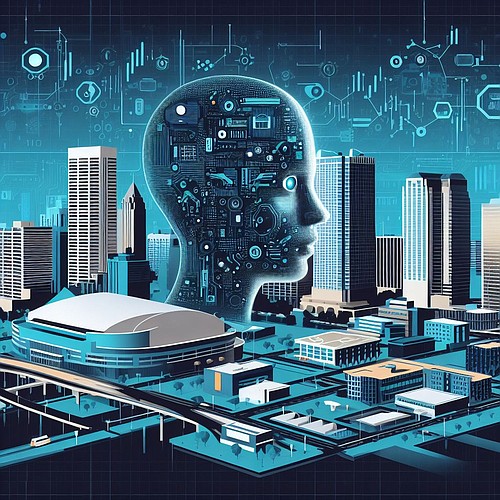
Artificial intelligence is not a panacea or magic bullet.
It is not a flash in the pan. It is not evil or righteous.
It is not good at tasks that require common sense, ethics and even empathy.
AI is not an all-or-nothing proposition, said Bob Touchton, a technology adviser and subject matter expert on autonomous systems.
“You don’t have to throw out everything you’re doing and replace it with your new AI version. You can do it in strategic doses where it will have the most impact,” said Touchton, one of four speakers at a recent conference at Jacksonville University.
The event, presented by Jacksonville Business Professionals, explored the business benefits of AI. It took place Sept. 29 at JU’s Davis College of Business & Technology.
Touchton focused on what AI is good at as well.
This includes efficiency, data analysis, automation of mundane and repetitive tasks, natural language processing, language translation, content creation, fraud detection, autonomous systems and more, Touchton told the audience of business professionals and students.
The other speakers were Matthew Chang, founder of Chang Industrial, which provides engineering and advisory services for autonomous systems and high-end automation; Matt Berseth, cofounder and CIO of NLP Logix, an AI services company; and Nick Allard, founding dean of the JU College of Law.
Jacksonville Business Professional is a nonprofit organization comprising accountants, lenders, attorneys, insurance providers and other professionals and business consultants.
The group “provides a robust forum for education, networking and collaboration among the various professionals and consultants serving Northeast Florida businesses,” according to its website.
Here are 10 takeaways from the conference:
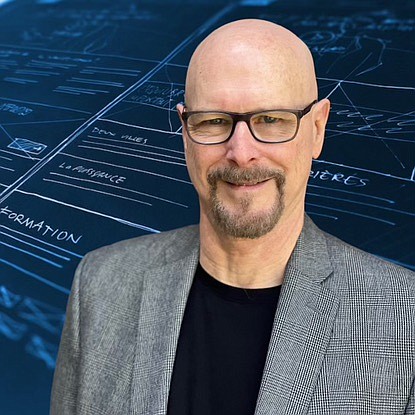
What is artificial intelligence?
“AI refers to computer systems and software that can perform tasks traditionally requiring human intelligence. These tasks include understanding natural language, recognizing patterns in data, making plans and decisions, learning from experience, and adapting to new situations,” Touchton said.
“AI systems aim to automate and optimize processes, solve complex problems, and achieve goals via human-like cognitive functions using advanced algorithms, data, knowledge and patterns. What really matters is can you make your system or computer or your automobile do things that are radically different and better than what you can do using computers the old-fashioned way?”
It’s been around longer than you might think
AI is not new, Touchton said. It’s been around since the early 1950s.
Even before the term was coined, English mathematician and computer scientist Alan Turing, who is seen as the father of theoretical computer science and artificial intelligence, developed the Turing Test.
“The Turing Test is basically setting up someone to chat with two entities, one human and one AI. If the test subject cannot clearly determine which chat is real and which is an AI, then the AI ‘passed’ the test,” Touchton said.
“Pretty impressive for 1950, right?”
AI’s biggest benefit
“The main benefit is to significantly improve or materially improve something about your business or organization, whether it’s your stakeholders, competitive advantage, employee satisfaction and retention. This doesn’t have to be a war with your workers,” Touchton said. It can also benefit product quality.

Helping a business
There are many platforms incorporating AI that can help a business in several ways, Chang said. Here are a few examples.
• For marketing, SheetGPT (sheetgpt.ai) integrates OpenAI’s text and image generation in your Google sheets; Namelix (namelix.com) uses AI to create business or new products/service names; Copy.ai uses AI to write copy for you to use in blogs, posts and email marketing; Publer (publer.io) can be used to schedule, collaborate and analyze all your social media posts from the same spots.
• For sales, Outgrow (outgrow.co/quiz-maker) quizzes can be used to generate and or qualify leads, collect data and engage existing customers; GMass (gmass.co) breaks Gmail’s limits on cold email outreach, and gives you email analytics like if your email has been opened; Findymail (findymail.com) exports leads automatically from Sales Navigator and Apollo and can enrich with accurate B2B emails.
• For graphic design and video, vidyo.ai can be used to make short videos from long ones, and you can create social-ready short clips from your videos; IIElevenLabs (elevenlabs.io) can create lifelike voiceovers for your content and its AI voice generator serves as a text reader; Glasp (glasp.co) creates summaries of YouTube videos and produces transcripts for articles or closed captions.
Choosing your words when talking to AI
“How do you talk to AI? Talk to your AI like you talk to your intern at work. That’s my recommendation,” Chang said.
“You have a bright young intern at work. You’re spending time with them. You’re investing in their career. Talk to your AI like you talk to an intern. Don’t talk to your AI like to talk to your spouse. That’s a horrible idea. Don’t confide in AI. That’s a terrible idea.
“What’s the privacy on this stuff? I have no idea. So for goodness sakes, be cautious with what you tell AI, it’s probably keeping a record on you that was probably going to someplace you didn’t want it to.
“So talk to it like you would an intern. Be specific in what you’re asking it to do. Be specific in what you’re asking it for. And then give it some latitude to come back with an answer.
“And if the answer is not what you thought, ask it in a different way. Each of these things takes 15 to 30 seconds to generate results.”
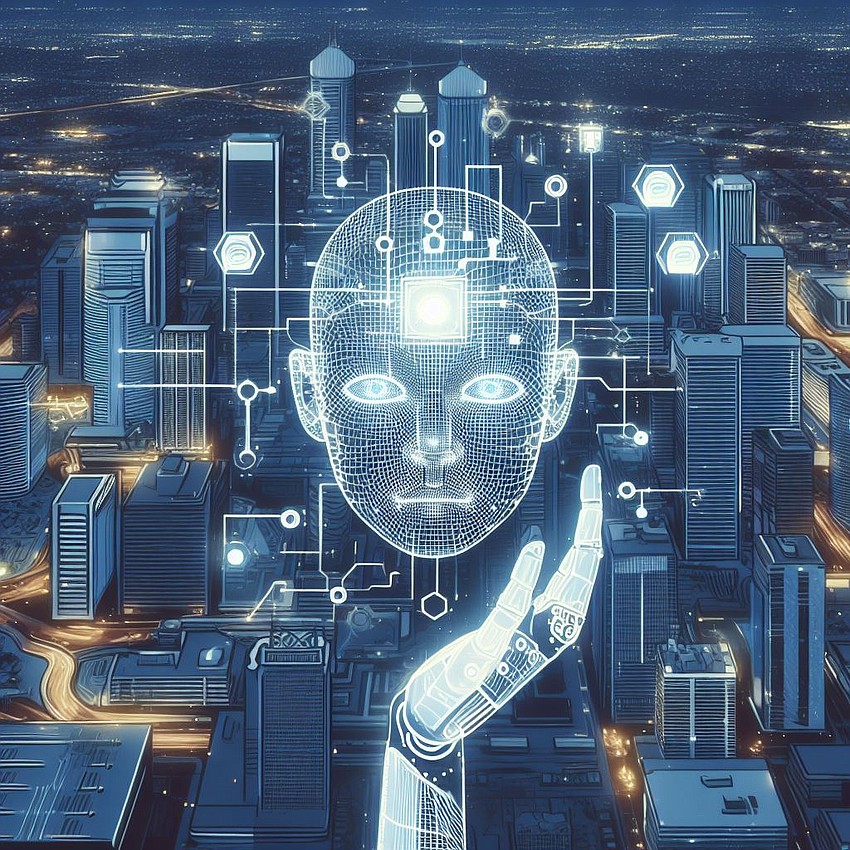
Involving your workers
Chang has been working with AI and autonomous systems since he launched his company in 2017
“Three years ago, some of these early autonomous projects started to come to fruition where they were completed, they were deployed, they were manufacturing or supporting supply chain, and we can actually observe workforce,” he said.
“We included workforce in the design in some of the projects, and oops, we forgot to in others. So for projects where we had put autonomous and AI-enabled robotics into a workforce, and we included the actual workers, the adoption and results were fantastic. The turnover of employees in what are typically high-turnover jobs went to near zero. The employees started innovating.
“The employees would come up with suggestions, and we would empower them with a limited programming kit where they can actually modify the systems and they would start to improve efficiency after we left.
“Initially as an engineer, to have a blue-collar worker tinker with my system and make it better, the first reaction was honestly to go, ‘What do they know?’ And then I realized, they know everything. They do this job every single day. They run this production line, they’ve moved these goods, they manage this inventory every single day. They’re actually the expert, and I was the one that knew very little. All I did was give them the tools that they can now use to make their jobs better.”

Witnessing the hype
About 12 months ago, the release of ChatGPT (a large language model-based chatbot developed by OpenAI) changed the world of AI, Berseth said.
“It’s awesome, it’s great for our business, but I think it’s going to be great for everybody just to see the new efficiencies and the new capabilities we are going to be unlocking here in the future,” he said.
At the moment, we are in a hype cycle, Berseth said.
Headlines on news stories about AI say it’s taking over marketing, for example, and transforming health care, cybersecurity and communication.
“And anytime you seem to have an ‘impossible’ decision, just turn to AI,’” Berseth said, summing up a series of headlines. “Wow. And if you listen to these guys, you can live longer and grow rich with AI. ... Here’s another one: ‘Why ignoring AI can be the biggest mistake of the century.’
“There’s a lot of hype. There’s a lot of goodness; I’m very bullish on AI. But man, there’s a lot of headlines and a lot of information coming at us.”
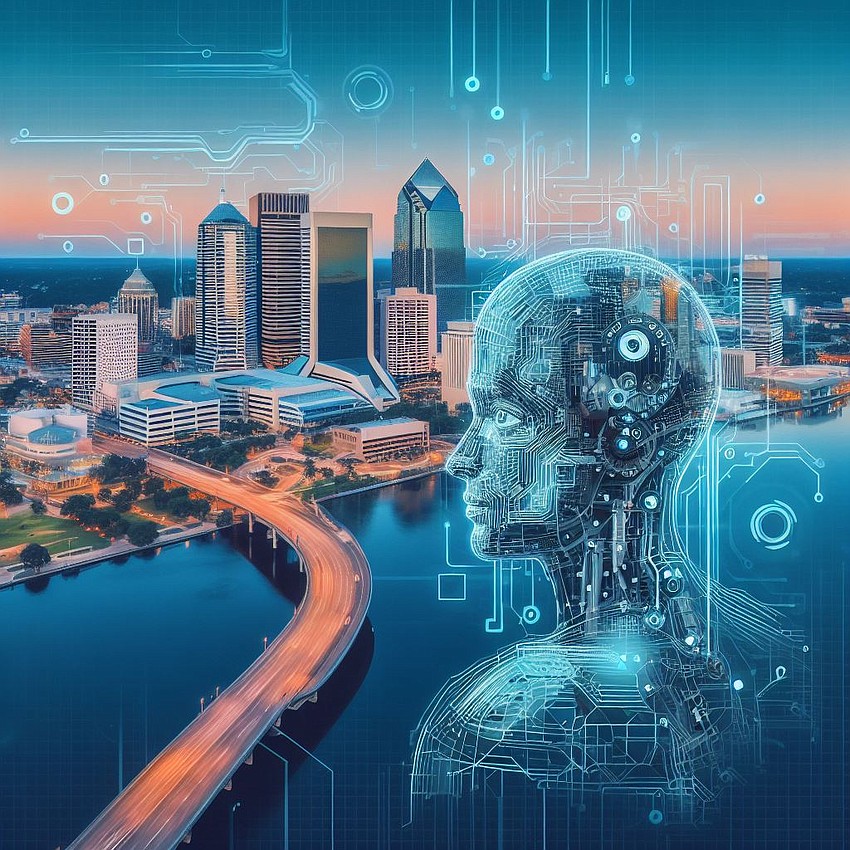
It’s all narrow AI now
All of the AI systems in use today are narrow AI, Berseth said. These are systems designed to perform singular or limited tasks.
“You can just insert the word ‘narrow’ in front of it,” he said.
In contrast, AGI, or artificial general intelligence, is a hypothetical form of AI in which a machine can learn and think like a human. It is still a concept and research goal.
Some think AGI is 10 years way, some think it’s 20, “and some people think never,” Berseth said. “We don’t really know when it is going to come.”
Self-driving cars: Narrow AI, but ...
“Tesla is working on self-driving (cars). It’s interesting when we will get there. That might not be a technology problem. That might be more of a social problem about where we put risk,” Berseth said.
“I like that systems are thinking about self-driving. Driving a car it is one thing (as defined in narrow AI), but it’s a pretty complex one thing. I think you can think about that as a set of narrow AI algorithms. There are all kinds of detection algorithms, all kinds of narrow AI algorithms developed and kind of packaged together. And that’s what helping with self-driving.”

Embracing change through AI
Allard said people are often cautious and can be late adapters to change.
“There are good reasons for people to be late adapters, but just trying to hit the pause button or to ignore change is not a remedy for success,” he said.
'The businesses, organizations, educators, law firms that lean and try to understand this new technology and try to a make good use of this new tool, while mitigating the challenges, the downside, are the ones that have an advantage.
“They’re going to have an advantage and they are going to be at the forefront, but they’re also going to make a contribution."
